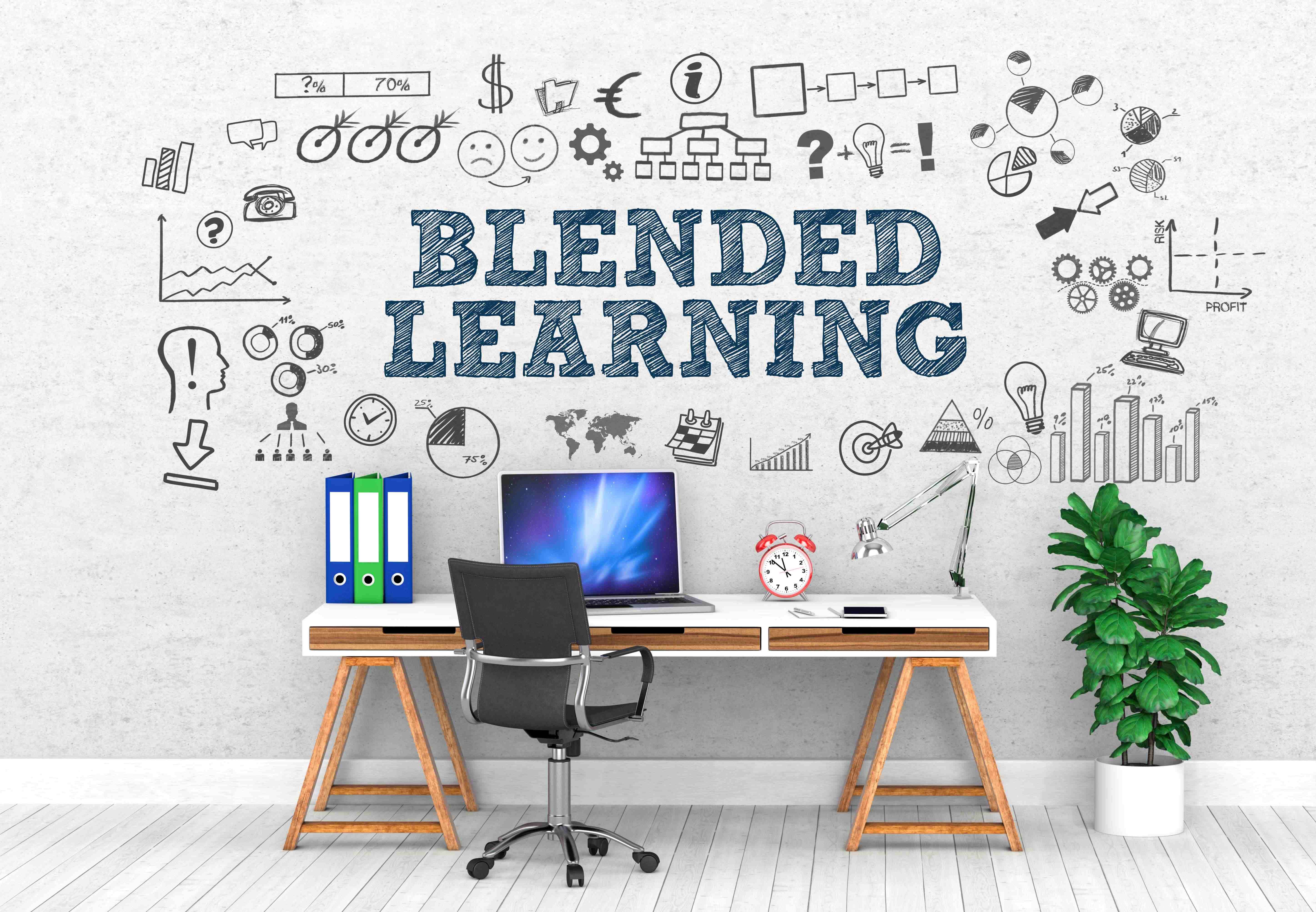As in all sectors, the digital transformation in higher education is already well underway, with developments in eLearning technology helping to spearhead this shift—promising students more relevant educational experiences, teachers and lecturers less time spent on administrative tasks, and support staff with the ability to empower their educational strategies with data-driven insights.
With 96% of universities and 79% of further education colleges across the United Kingdom currently utilising augmented or virtual reality or a bespoke eLearning solution in some capacity for learning and development, it’s clear that the field is already embracing emerging technologies. But how are they reshaping higher education in 2023 for students and staff?
This guide explores the latest trends in eLearning technology, highlighting the principles and developments empowering this growing field and the impact a robust virtual learning environment can have on students’ educational attainment. Alongside this, we’ll also discuss what the present can tell us about the trajectory of eLearning technology over the next five years.
How is eLearning Technology Evolving?
As eLearning technology evolves, so do the techniques and methodologies that inform its development. Designers, software programmers, and learning coordinators across the virtual learning environment are applying the theories of instructional design to their work in order to expand and enhance learners’ experiences.
The ARCS model plays an increasingly significant role in the evolution of eLearning technology. The acronym represents the focus of instructional design experts: keeping the attention of a team or class, the relevance of educational content, students’ confidence in directing their own learning, and the satisfaction that all involved should come away with after an educational experience.
Digital learning in higher education is helping students to achieve their academic goals, and the ARCS model is ensuring that eLearning technology is helping learners to achieve their academic goals and remain engaged with their studies—indeed, it doesn’t matter how cutting-edge the software is if it fails to motivate an audience to use it.
eLearning technology is helping to maintain learners’ interest, and with the refinement of emerging technology such as virtual reality and augmented reality—which we’ll explore in greater detail in the last section—it’s easier than ever to combine hands-on learning with discussion and collaboration.
Likewise, the learning process itself can show the usefulness of the content when it’s delivered in a practical manner such as this, meaning that students can bridge the gap between academic study and the real world. eLearning technology is helping learners to understand how their studies will help them not only today but in the future too—whether that’s getting into university or getting a job.
The development of AI and data collection is making it easier for educators to assess learners’ strengths and weaknesses. Many bespoke eLearning products provide students with immediate feedback, giving them the tools they need to direct their own learning and hone those skills they need more practice in. This personalised learning experience can help to keep students motivated whilst minimising the risk of them falling behind their classmates.
Outside of lessons, AI and machine learning are helping to reshape higher education by automating enrollment, grading, and marking, saving teachers the time spent on clerical duties. As a result, these technologies can aid work-life balance and allow educators to spend more time with their students.
At the same time, staff can now quickly parse and present metrics on engagement and attainment, with these data-driven strategies going on to inform the continued development of learning strategies.

Bespoke eLearning Strategies: Aiding the Digital Transformation in Higher Education
Digital learning in higher education requires a comprehensive, strategic approach. Technology is crucial, but it’s only one part of the puzzle of educational change—and finding the right eLearning technology is just the start of solving the problem. Training your staff on the use of this technology is also vital, as is supporting the wider organisation through the shift that this transformation requires.
This is known as the 20:20:60 rule, suggesting how much a strategy should focus on each specific area, from the technological platform to the training of staff and learners and support for the overall transition towards bespoke eLearning technologies, respectively. Technology is visible and can show learners and educators that an organisation is beginning to implement change, but it takes time and effort to change habits and educational methodologies.
In return, all students and faculty are set to gain from the evolution of digital education:
- Bespoke eLearning technology is helping to respond to the “long shadow” of the pandemic in the higher education sector. The number of top grades awarded fell by 8.4% in 2022, impacting already struggling students from disadvantaged backgrounds, but catching up on missed skills and competencies becomes easier when advances in digital education mean that students can guide their own learning and tutors can see, at a glance, an overview of attainment across an entire semester.
- With the digital transformation in education, there’s a move away from the “one size fits all approach.” This is particularly vital when we consider the UK Government’s data which highlights that 1.5 million students have special educational needs or a care and support plan in place. Advances in accessibility standards, such as Web Content Accessibility Guidelines (WCAG), mean that diverse learners from all backgrounds and levels of ability can benefit from the virtual learning environment.
- Massive open online courses (MOOCs) make it easier for students to study outside standard hours. This frees up teaching staff to focus on ensuring that all students can meet core learning outcomes, whilst those ready for a greater challenge can study in their own time. Integrating these eLearning platforms into existing learning management systems means that teachers can continue to track progress and provide feedback should necessary.
- Video conferencing and document sharing are making it easier for all staff to collaborate and enhance the educational environment. The increasing integration of these collaboration tools is making it easier for admin and support staff to work with teachers and students, support learning activities, track attendance, and keep student data safe.
Staff and students need to be helped to understand how to use eLearning technology, why it’s being used, and the benefits of new ways of teaching and learning. This requires regular training and support for staff, providing examples of success from across the industry that utilise this bespoke eLearning strategy and—perhaps most importantly—visibility from leadership.

The Future of Digital Learning in Higher Education
So, now that we know the present situation for digital transformation in higher education, what does the future hold?
As with most things tech, the growth of eLearning over the next five years will be supercharged by research into artificial intelligence and data processing automation across multiple sources.
The increasing use of big data will allow for information to be quickly passed back and forth between the virtual learning environment and the classroom. Smartboards are not a new technology, but with their integration with cloud-based eLearning platforms via the educational Internet of Things (IoT), lesson plans and feedback can be quickly archived and shared, helping students and staff to stay organised and revisit educational resources in their own time.
Alongside this, the next five years will no doubt see the continued success of virtual and augmented reality eLearning technology. As we mentioned at the start of this article, many institutions already leverage this equipment to deliver experiential learning opportunities, giving students the ability to visualise complex physical and chemical principles or to encounter and resolve complex engineering and manufacturing problems in a risk-free environment.
With the VR for education market having reached a global value of $8.6bn in 2022, students will continue to be engaged and motivated to reach educational milestones through discussions, helping to reach the ideal blend of scenario-based, collaborative, and formalised learning.
Microlearning is also growing in popularity, with educators breaking down complex ideas and concepts into bite-sized theoretical study, which is spaced out with games, discussions with classmates, or simulations. This form of learning has been shown to improve retention of educational content by up to 90% compared to traditional forms of learning and prepares higher education students for the continuous learning and attitude towards personal development that is required for success in many career paths.
Key Takeaways
eLearning technology is rapidly reshaping higher education in 2023 and beyond. With the widespread adoption of VR/AR, bespoke eLearning platforms, and big data, educational institutions are increasingly able to provide students with more engaging and relevant learning experiences.
The integration of instructional design principles, such as the ARCS model, ensures that the virtual learning environment motivates learners and enhances their academic achievements. Furthermore, AI and data collection enables personalised learning experiences and streamline administrative tasks, allowing educators to focus on student engagement.
As we move through the decade, these developments promise to revolutionise digital learning in higher education, facilitating experiential learning, fostering collaboration, and catering to learners from every background. With eLearning technology as a catalyst for change, higher education is poised for a digital transformation that will empower students and educators alike.
Specialists in Recruiting eLearning Technology Professionals
At Instinct Resourcing, our consultants possess the expertise you need to connect with the eLearning technology specialists you require to drive the success of your digital education strategy, support learners in achieving their learning goals, and achieve enhanced productivity. To learn more about our services, get in touch for a no-nonsense discussion of your recruitment needs.



